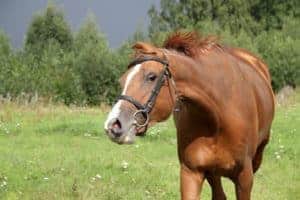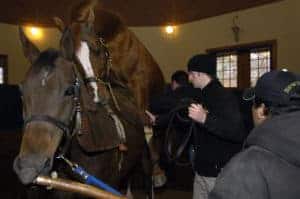
Outcomes of Solar Surface Penetration Injuries Studied
Solar foot penetrations involving the joints can be career- and even life-threatening injuries.


Solar foot penetrations involving the joints can be career- and even life-threatening injuries.

By using hoof kinematics, researchers are developing a technique to aid in the diagnosis of mild or subclinical lameness.

Researchers found a feed supplement designed to combat headshaking provided little relief to affected horses.

Vets evaluated the potential application of dynamic endoscopy when examining Thoroughbred yearlings.

Swedish researchers discovered that genetic makeup affects locomotion patterns in horses.

Researchers evaluated the impact of postpartum breeding date on pregnancy, pregnancy loss, and foaling rates.

A specific trimming technique increased the hoof’s weight-bearing area and increased the heel angle.

Researchers recently tested if idiopathic headshaking in horses could be similar to a condition in humans.

Researchers found an intravaginal progesterone-releasing device effective in inducing early estrus in mares.

Many fencing options are available, but there are no hard-and-fast rules as to which is the best choice.

While the drug initially reduced airway sensitivity, long-term use seems to result in reduced effectiveness.
Rotational grazing allows horses to graze one section of pasture while other sections recover.

One study showed bacteria on stallions’ external genitalia do not appear to affect stallion or mare fertility.

A team of researchers has successfully located chromosomal regions associated with equine sarcoids.
SLC can help breeders address problems associated with breeding both stallions and mares.

The team achieved up to a 95% accuracy rate by using mares’ blood plasma to determine fetal gender.
Stay on top of the most recent Horse Health news with